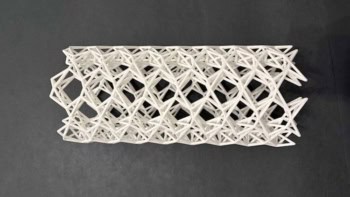
A static electric field can be used to manipulate the superconducting state of metallic superconducting thin films, according to new experiments by researchers in Italy. The effect, which was first put forward by the London brothers, Fritz and Heinz, in their original formulation of superconductivity back in 1935, might be exploited in novel-concept devices such as supercurrent and Josephson field-effect transistors, as well as classical and possibly even quantum bits.
“It seems that we are realizing a novel phase of the superconducting state driven by electric fields,” says Francesco Giazotto of the Consiglio Nazionale delle Ricerche (CNR) and the Scuola Normale Superiore in Pisa, who led this research effort. “At the moment, we are unclear as to the type of phase transition we are inducing but our finding definitely represents something very intriguing from the fundamental physics point of view.”
Electrostatic fields should not affect either a metal or a superconductor
Superconductivity is the complete absence of electrical resistance in a material and is observed in many materials when they are cooled to below their superconducting transition temperature (Tc). In the Bardeen–Cooper–Schrieffer (BCS) theory of (“conventional”) low-temperature superconductivity, this occurs when electrons overcome their mutual electrical repulsion and form “Cooper pairs” that then travel unheeded through the material as a supercurrent.
According to the theory of electrostatic screening, an electrostatic field should not have any effect on either a metal or a superconductor. Giazotto and colleagues have now turned this idea on its head and have found that an intense electric field can dramatically affect the superconducting state, be used to control the supercurrent, and, at sufficiently intense fields, quench the superconductivity altogether.
Spatial deformation of the Cooper pairing parameter?
The researchers obtained their results by applying intense static electric fields on the order of about 108 V/m through either the side or bottom gates of all-metallic supercurrent transistors made of two different BCS superconducting thin films (a titanium- and an aluminium-based one). The devices were made using standard lithography and simple metallic thin film deposition techniques.
Giazotto and colleagues say that the superconductivity quenching might come from a spatial deformation of the Cooper pairing parameter by the electric fields localized at the surface of the superconductor. This leads to a reduced available area through which supercurrent can flow. More experiments will be needed to confirm this hypothesis, however.
“From the basic physics point of view, our results suggest that there are still some very important aspects of conventional superconductivity that need to be understood,” says Giazotto. “In this context, I’d say that we are still rather far from understanding the microscopic mechanism driving the phenomena we have observed. We believe that such a field-effect-driven phase transition in superconductivity could represent a valuable platform for developing new theories within the BCS model.”
A whole new area of research?
As for applications, it might be exploited to make new-concept devices, including all-metallic superconducting field-effect transistors and advanced quantum information architectures, he tells Physics World. Other possible devices include tunable Josephson weak links or interferometers and Coulombic and coherent caloritronic structures.
Reporting their study in Nature Nanotechnology 10.1038/s41565-018-0190-3, the researchers say they are now busy trying to better understand the microscopic origin of the field effect. “From the experimental side, we are looking at this effect in a wider range of metallic superconductors and investigating the impact of electric fields on Josephson interferometers,” says Giazotto. “In principle, our work may have opened up a whole new area of research focusing on the role of intense electric fields on superconductivity. Time will reveal whether this is the case or not.”



